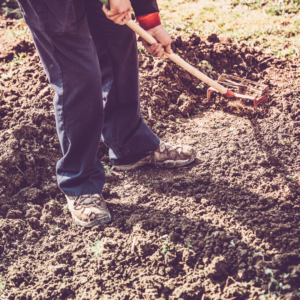 If you’re looking to grow your own food and enjoy the rewards of a flourishing garden, you’re in the right place. January marks the perfect time of year to start planning and getting everything ready. Whether it’s your first time starting a garden or you’re a seasoned green thumb, there are a few steps you need to take in order to achieve a thriving garden. In this guide, we’ll help you through the essential steps that need to be taken so you can have a successful garden come spring.
If you’re looking to grow your own food and enjoy the rewards of a flourishing garden, you’re in the right place. January marks the perfect time of year to start planning and getting everything ready. Whether it’s your first time starting a garden or you’re a seasoned green thumb, there are a few steps you need to take in order to achieve a thriving garden. In this guide, we’ll help you through the essential steps that need to be taken so you can have a successful garden come spring.
Step 1: Decide What to Plant
When it comes to planning your garden, you must first decide on what type of vegetables you would like to grow. Start by deciding what your family enjoys eating and make a list of the produce they love. Next, check which crops are best suited for the climate you live in and what will grow best in your soil type. Consider planting perennial crops that come back year after year, or focus on annual plants that produce food more quickly. Keep in mind that you should space out your plantings to ensure you get fresh vegetables throughout the entire growing season.
Step 2: Choose Your Site
Choosing the right site for your garden is crucial to its success. Look for a location that receives plenty of sunlight and has well-draining soil. Avoid areas that tend to flood or are too rocky, as this can stunt plant growth. Also, pay attention to nearby trees that may cast shade over your garden bed and rob your plants of sunlight. If you are planting a container garden, make sure it has proper drainage holes to avoid over watering.
Step 3: Prepare the Soil
Soil preparation is essential to having a bountiful harvest. Start by removing any weeds or debris from the site that you have chosen. Next, consider tilling the soil to make it easier for your plants’ roots to grow. Adding organic matter to the soil can also provide necessary nutrients for your plants to thrive. Compost is a natural option for enriching your soil and can be added in the fall or early winter before planting.
Step 4: Planting and Care
It’s now time to get your soil ready and begin planting. Make sure to check the seed packet for the ideal planting time and depth, as well as how far apart the seeds should be spaced. Once planted, regular watering is essential for plants to grow healthy and strong. Consider drip irrigation or a hose with a low-pressure nozzle that can help water the plants at the root level. Regularly fertilizing with organic fertilizers will also keep nutrients flowing to your plants.
Step 5: Pest and Weed Control
Pests and weeds can be a common issue when planting a garden. To avoid problems, consider using organic means to control and keep weeds at bay rather than using toxic herbicides, which can harm beneficial insects and pollinators. Consider using natural pest control methods such as companion planting and crop rotation to help control pests and insects. Also, try using natural pest deterrents like plant oils, insecticidal soaps, and beer and yeast traps.
Now that we’ve walked through the various steps involved in planning your garden, you’ll be well-equipped to get started. Sure, there might be a little hard work involved in the process, but the rewards of a flourishing garden that provides fresh, organic produce are more than worth the effort. Remember, planning is paramount to a successful garden, so take the time to choose your site and plant accordingly, and you’ll be on your way come springtime.




